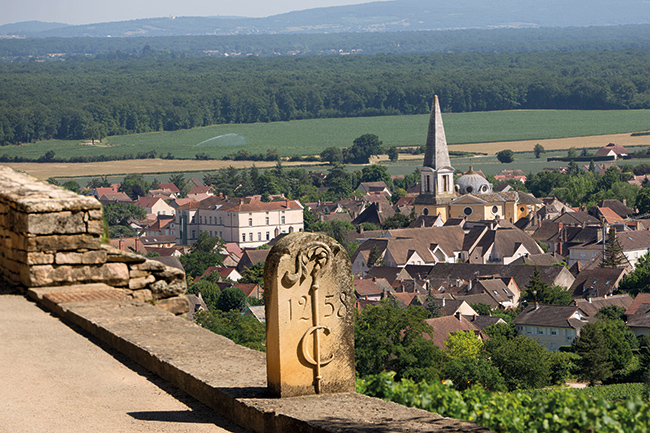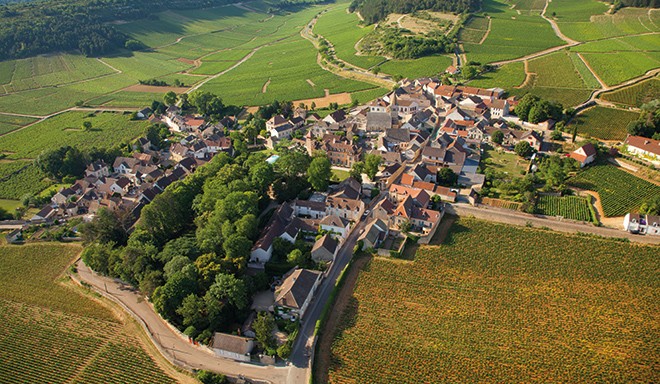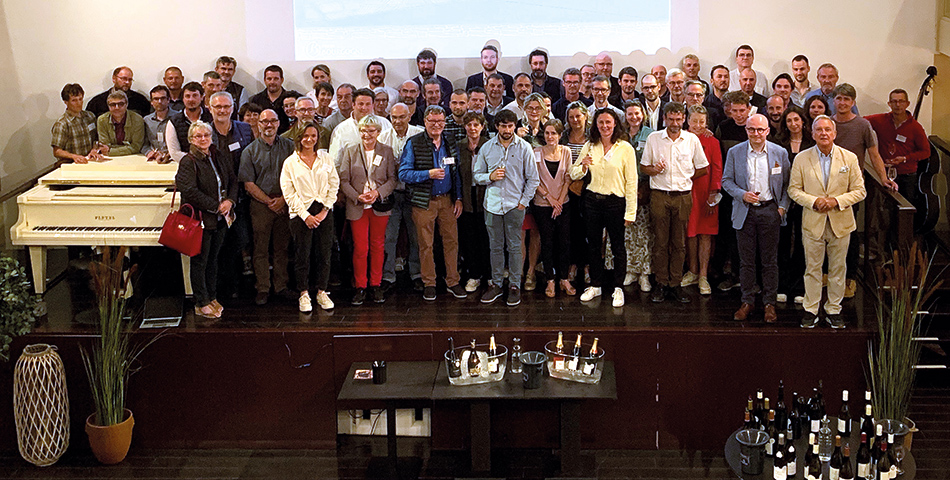For the 10th edition of the festival Le Mois des Climats, organised by the Association des Climats du vignoble de Bourgogne and the Saône-et-Loire Department of Tourism, visitors were invited to three conferences and tastings on monastic wines from the Côte Chalonnaise. One of them was held at the Cellier aux Moines estate (Givry).

Clos, abbeys and terroirs... A famous historical triptych which led to the Climats of the Burgundy vineyard being listed as a UNESCO World Heritage Site in July 2015. The classified area concerns more particularly the Côte de Beaune and the Côte de Nuits, but this type of terroir-based viticulture is also strongly expressed in the Côte Chalonnaise, a few kilometres further south. The Clos du Cellier aux Moines, in Givry, is one of the most eloquent examples. It was founded around 1130 by the Cistercian monks of the Ferté abbey, the first daughter of the Citeaux abbey. A few hundred vintages later, the old cellar still dominates the northern slope of the appellation in a sober but powerful way. This includes the five single hectares of the historic Clos, which are still farmed by the estate. Today, the wines are vinified a few hundred metres further on in a modern winery where the architectural style is in line with the famous Cistercian austerity and efficiency.
The Cellier aux Moines domain of Givry exceptionally opened its doors to the public on 16th June, during the festival Le Mois des Climats. The conference was accompanied by a tasting of three Cistercian wines from the Côte Chalonnaise: a white Rully 2018 Climat Maizières from Domaine Dureuil-Janthial, a Givry premier cru Servoisine 2015 from Domaine de la Ferté and of course the premier cru Clos du Cellier aux Moines, vintage 2019. These wines will be commented on by Raoul Salama, wine and food journalist.
Philippe Pascal, owner of the Cellier aux Moines estate, retraced the history and evolution of this monastic heritage symbol in the Saône-et-Loire vineyards: from its foundation in the 12th century to the organic certification obtained in 2020. The Climat is still surrounded by walls and has a southern exposure. The vines are located in the middle of the hillside and in the upper part of the hill, where the monastic cellar was built. The grapes are sheltered from the northern winds but well ventilated, and achieve good ripeness. The clay-limestone geology of the great Burgundy vineyards is the norm here: the soil is fairly deep in the upper part of the vineyard (50 to 70 cm) and thickens while remaining slightly stony on the way down. Since 2006, the Pascal family has carried out rigorous plot work and a replanting programme was started in 2008. Very fine Pinot selections have been chosen for their perfect suitability to the soil and subsoil. As for the cellar, Philippe Pascal likes to recall a Cistercian leitmotiv: “simplex natura”. Nature simply needs to be accompanied to give the full measure of its creative genius.
This evening was an opportunity to (re)discover a jewel of the Chalonnaise coast. This series of conferences began at Cluny Abbey and ended at Saint-Philibert Abbey in Tournus, offering three memorable meetings.
Laurent Gotti
Nestled on the Côte de Beaune hills, Monthélie is one of the most scenic villages in Burgundy. It is also one of the smallest appellations in the Côte d'Or with only 140 hectares. Its wines are not big enough to compete in reputation with its neighbours Volnay and Meursault, but they are among the best value for money in the region. The Monthélie wines, mainly red, are distinguished by their finesse without lacking in structure. “They are a balance between the two types of wine, with a certain elegance but also a tannic texture”, adds Cataldina Lippo, head of the Douhairet-Porcheret estate. The first growths, coming from two distinct sectors, thus offer quite diverse faces. Some are located in the direct extension of Volnay, with the emblematic Climat Les Champs Fuillots. These wines closely follow in the footsteps of their famous neighbour. The others, located on the fresher slopes of the Combe Danay (Les Duresses, Les Cloux) are generally more robust.

Chardonnay has gained ground in Monthélie in recent years. The whites represent 30% of the appellation today (about forty hectares) and often surprise the Côte de Beaune lovers. They are similar to Meursault, evoking vanilla and white flower (hawthorn) notes. Their textures on the palate offer smooth flavours enhanced by a fresh acidity that is the hallmark of great white wines.
The icing on the cake is that the young winemakers are revitalising the appellation and are organising a tasting in Paris this autumn.
Laurent Gotti / Photo : Bureau interprofessionel des vins de Bourgogne
The Prestige Cellar of the Burgundy wine interprofession has become a real reference in the 50 years since it was founded. Its standards are very high: only 17% of the 831 samples presented were awarded the precious sesame, following examination by three juries.
Each time the Bureau Interprofessionnel des Vins de Bourgogne (BIVB) organises training courses or events in France or abroad, the Prestige Cellar wines are used. These are all opportunities to highlight the selected wines, presented under their own label, but carrying the official selection badge.

François Labet, President of the BIVB: “Despite the limited wine supplies, we are proud to offer a very good selection for 2022! In fact, compared to previous years, we have received far fewer samples. 831 vintages were tasted compared to 1,580 last year. This 47% drop symbolises the paradox of the year we are going through. While we produced our smallest vintage in almost 40 years in 2021, we have never sold so much wine”.
There are 43 new companies distinguished for the very first time or returning into the selection after being absent for one or more years. This is also a premiere for the Pouilly-Fuissé Premier Cru appellation, which enters with the 2020 vintage. This vintage is honoured in this selection with a little more than half of the distinguished wines. This vintage has particular conditions which have produced new and quite unique balances.
Photo : Bureau Interprofessionel des Vins de Bourgogne